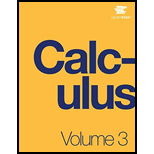
Resonance
Consider an undamped system exhibiting simple harmonic motion. In the real world, we never truly have an undamped system; -some damping always occurs. For theoretical purposes, however, we could imagine a spring-mass system contained in a vacuum chamber. With no air resistance, the mass would continue to move up and down indefinitely.
The frequency of the resulting motion, given by
5. Another real-world example of resonance is a singer shattering a crystal wineglass when she sings just the right note. When someone taps a crystal wineglass or wets a finger and runs it around the rim, a tone can be heard. That note is created by the wineglass vibrating at its natural frequency. If a singer then sings that same note at a high enough volume, the glass shatters as a result of resonance.
 The TV show Mythbusters aired an episode on this phenomenon. Visit this website (http:// www.openstaxcollege.org/l/20_glass) to learn more about it. Adam Savage also described the experience. Watch this video (http://www.openstaxcollege.org/l/20_glass2) for his account.
The TV show Mythbusters aired an episode on this phenomenon. Visit this website (http:// www.openstaxcollege.org/l/20_glass) to learn more about it. Adam Savage also described the experience. Watch this video (http://www.openstaxcollege.org/l/20_glass2) for his account.
Want to see the full answer?
Check out a sample textbook solution
Chapter 7 Solutions
Calculus Volume 3
Additional Math Textbook Solutions
Calculus: Early Transcendentals (2nd Edition)
Elementary Statistics: Picturing the World (7th Edition)
University Calculus: Early Transcendentals (4th Edition)
Elementary Statistics (13th Edition)
Calculus: Early Transcendentals (2nd Edition)
- II Consider the following data matrix X: X1 X2 0.5 0.4 0.2 0.5 0.5 0.5 10.3 10 10.1 10.4 10.1 10.5 What will the resulting clusters be when using the k-Means method with k = 2. In your own words, explain why this result is indeed expected, i.e. why this clustering minimises the ESS map.arrow_forwardX Acellus | Student admin192c.acellus.com go 0:0 Hannah wants to have concrete stairs for her backdoor. How much concrete will be needed to build the stairs? 20 cm 70 cm 30 cm 15 cm 10 cm 45 cm cm 70 cm GIF 自 لاarrow_forwardwhy the answer is 3 and 10?arrow_forward
- 1 Hannah wants to have concrete stairs for her backdoor. How much concrete will be needed to build the stairs? 70 cm 30 cm 15 cm 10 cm 10 cm 20 cm 45 cm cm³ GIF GIF/ 2 3 4 qwe asdf 5 6 自 yu ty u 8 ghjk 9 P Z X C cv b vbnm ×arrow_forwardPS 9 Two films are shown on screen A and screen B at a cinema each evening. The numbers of people viewing the films on 12 consecutive evenings are shown in the back-to-back stem-and-leaf diagram. Screen A (12) Screen B (12) 8 037 34 7 6 4 0 534 74 1645678 92 71689 Key: 116|4 represents 61 viewers for A and 64 viewers for B A second stem-and-leaf diagram (with rows of the same width as the previous diagram) is drawn showing the total number of people viewing films at the cinema on each of these 12 evenings. Find the least and greatest possible number of rows that this second diagram could have. TIP On the evening when 30 people viewed films on screen A, there could have been as few as 37 or as many as 79 people viewing films on screen B.arrow_forwardskip A swimming pool plan has concrete stairs leading down into the shallow end How much concrete will be needed to build the stairs? Bift 9 ft 2 ft 1 ft 9 ft 2 ft 5 ft [ ? ] ft³arrow_forward
 Trigonometry (MindTap Course List)TrigonometryISBN:9781337278461Author:Ron LarsonPublisher:Cengage Learning
Trigonometry (MindTap Course List)TrigonometryISBN:9781337278461Author:Ron LarsonPublisher:Cengage Learning
